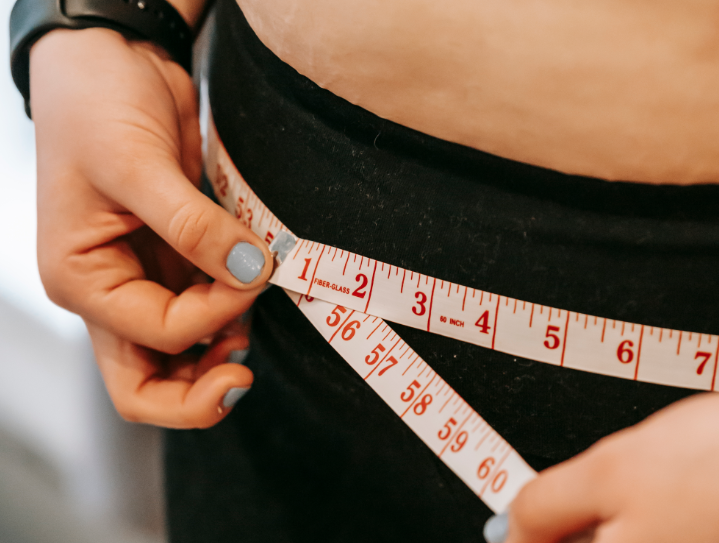Does Waist Training Actually Work?

© Andres Ayrton / Pexels
How does Kim Kardashian get a shape like that? And how are all of the TikTok influencers achieving that small waist look when they showcase their outfits on posts? Well, according to them, it is from a little help from a friend known as waist training.
But, aren’t waist trainers supposed to be bad for you? They crush you and make it hard for you to breathe. That is at least what I myself have heard before. Turns out, waist training is definitely nowhere near that. Let’s have a look together!
What is A Waist Trainer?
A waist trainer, a close cousin to the traditional corset, is essentially an elastic compression band designed to be worn around the waistline. These modern waist trainers are typically crafted from thick elastic materials and feature various fastening mechanisms such as laces, velcro, or hooks, all aimed at securely encircling the midsection.
Waist Trainers and Corsets in History
The controversial history of the corset, a garment that gained popularity during the Victorian era in Europe, is the stuff of fashion legend. While fashion historians like Valerie Steele argue that corsets have received an unfairly negative reputation, suggesting that severe health issues like organ failure and spinal deformities were rare and mostly resulted from overly tight lacing, it is undeniable that corsetry imposes certain limitations on the body’s natural movements, a point of contention for many.

It’s worth noting that, despite the controversies surrounding corsets, they have played a significant role in fashion history, reflecting evolving beauty ideals and social norms over the centuries. Whether celebrated as an emblem of femininity or criticized for its constraints, the corset remains an enduring symbol of the complex relationship between fashion and the human body.
What is Waist Training?
Waist training is the practice of wearing a tightly laced corset or waist cincher regularly, with the goal of gradually reducing the waist size and achieving an hourglass figure. It is often used to create a more defined waistline and a curvier appearance. However, it is important to note that waist training can have potential risks and is a topic of debate among health and fitness experts.
Alleged Waist Training Benefits
It’s important to approach any claims of benefits associated with waist trainers with a healthy dose of skepticism. The term “alleged” underscores the uncertainty surrounding these touted advantages.
1. Achieving an Hourglass Figure
The premise of waist training revolves around the idea that wearing a steel-boned corset can reshape the waist and floating ribs, creating a coveted hourglass figure. However, experts caution against putting too much faith in this notion. According to a blog post published by the American Board of Cosmetic Surgery (ABCS), the transformations achieved through waist training tend to be short-lived and won’t lead to any dramatic, lasting changes in body shape.
2. Improved Posture
One of the supposed benefits of waist trainers is their ability to maintain a tight midsection and encourage better posture. While certain medical support corsets, somewhat akin to waist trainers, have demonstrated success in correcting spinal curvature associated with conditions like scoliosis, it’s essential to note that such specialized corsets are typically prescribed and supervised by medical professionals. Attempting to address posture issues independently with a waist trainer is not recommended.
3. Postpartum Support
Some individuals may turn to waist trainers in the postpartum period with hopes of tightening their core. However, experts stress the importance of allowing the body sufficient time to recover during this critical phase. It is generally advised to wait at least four to six weeks after childbirth before engaging in vigorous physical activities, including the use of waist trainers, to avoid potential complications.
4. Strengthening Core Muscles
Waist trainer proponents often claim that these garments enhance posture and tighten abdominal muscles by forcing the body to work harder. Paradoxically, the compression exerted by waist trainers may have the opposite effect on the abdominal muscles, a point that will be explored further.
5. Weight Loss
Waist trainers may give the illusion of a quick solution for sculpting the midsection, but most of the perceived weight loss is superficial. The apparent reduction in waist size is often attributed to water loss through increased perspiration. Additionally, waist trainers might inadvertently promote a “crash diet” mentality, which is not only superficial but potentially detrimental to overall health. Some women have reported feeling consistently full while wearing waist trainers. Essentially substituting a healthy diet with a less-than-ideal alternative.
Safety Concerns Around Waist Training
Waist trainers are advised to be worn continuously for an extended duration of 8 hours during the day, a practice that carries inherent risks. Furthermore, it is strongly discouraged to wear them while sleeping, and their use during exercise is also ill-advised (details on this to follow).
If your goal is to achieve a temporary hourglass figure for a special event or occasion, wearing a waist trainer for a few hours is unlikely to lead to significant complications. However, it is crucial to remain attentive to your body and avoid wearing it if you experience discomfort or constriction.
Some of the possible waist trainer risks and side effects might include:
1. Weakening of Abdominal Muscles
One widely acknowledged consequence of wearing waist trainers for prolonged periods is the actual weakening of your abdominal muscles. The constriction and compression caused by these garments hinder the engagement of your abdominal muscles during core movements. This can lead to a gradual loss of strength and definition in your core muscles. Waist trainers, often worn in an attempt to achieve a slimmer appearance, have a passive effect that effectively turns off the abdominal muscles.
Frequent use of waist trainers ends up providing support to the body rather than challenging the muscles responsible for maintaining an upright posture. The compression sends signals to the back and core muscles to deactivate, undermining the hard work put into engaging abdominal muscles.
2. Impaired Airflow
Waist trainers can impede the proper functioning of the diaphragm, which can have serious consequences for both overall well-being and fitness endeavors. Wearing a waist trainer involves pulling it high enough to create the illusion of an hourglass shape, and this positioning covers the lower two ribs. However, this constriction in the rib cage can make it challenging for individuals to breathe normally. The diaphragm is the primary muscle responsible for breathing, and for it to work effectively, the abdomen must expand to accommodate its contractions. Unfortunately, wearing a waist trainer severely restricts this expansion. This impairment of airflow can have detrimental effects on one’s respiratory health.
3. Musculoskeletal Issues from Waist Trainers
The use of waist trainers also poses potential risks to your musculoskeletal system. The spine consists of individual vertebrae, each serving to facilitate different ranges of motion. However, the middle part of the spine is attached to the rib cage, limiting its free movement. At the same time, while trying to compensate for this restriction, you may inadvertently cause injuries in other areas. When the diaphragm is compressed due to waist trainer use, accessory muscles near the neck are triggered to aid in breathing. These smaller muscles are not designed to move the ribcage repeatedly throughout the day, and overuse can lead to discomfort, including neck pain, headaches, and jaw pain.
4. Pressure on Internal Organs
Sparks highlights that organs within the body are also meant to have a degree of mobility. Applying unnecessary compression to internal organs may create stress and discomfort. However, it’s essential to clarify that the long-term effects of such stress are not yet fully understood. Abdominal compression from a waist trainer is more likely to affect the abdominal muscles, which serve to protect the stomach, intestines, and other internal organs. While the pressure on internal organs is primarily muscular, it can result in muscular compensation and dependence on wearing the waist trainer.
5. Digestive Issues and GERD
Long-term usage of waist trainers may lead to digestive problems, particularly gastroesophageal reflux disease (GERD or acid reflux). The compression of the stomach can exert upward pressure on stomach contents, causing reflux into the esophagus. This phenomenon is a potential consequence of wearing waist trainers for extended periods.
6. Postpartum Considerations
Postpartum women, seeking to regain their pre-pregnancy shape, may be tempted to use waist trainers, especially if their abdominal muscles have been weakened during pregnancy and childbirth. This temptation is especially prevalent when pelvic floor muscles are particularly weak postpartum. However, it is essential to approach postpartum body shaping with caution, as waist trainer use might exacerbate issues related to pelvic floor prolapse and other postnatal complications.
Alternatives to Consider
Getting that hourglass shape can be a real challenge, especially if you are trying to target your waistline. However, instead of relying on those waist trainers, you are better off with a workout plan that focuses on your midsection.
Try out exercises that work those oblique muscles, the ones on the sides of your waist. You have plenty of exercise such as the “French Twist and Teaser” and good old side bends. They do wonders for your waistline.
We have discussed the ups and downs of waist trainers and some smart alternatives to help you achieve your fitness goals. Whether you are on Team Exercise or Team Waist Training, we would love to hear your thoughts. Do you have any personal experiences with waist trainers?


